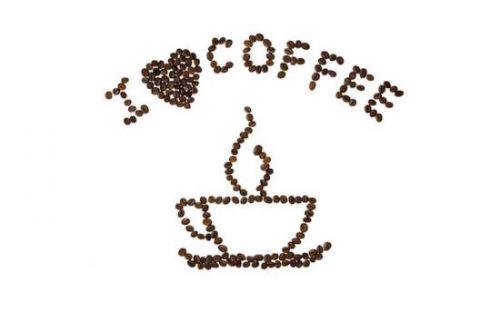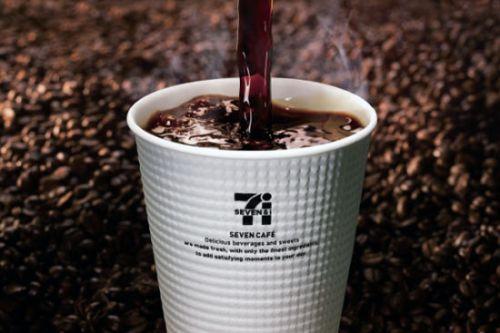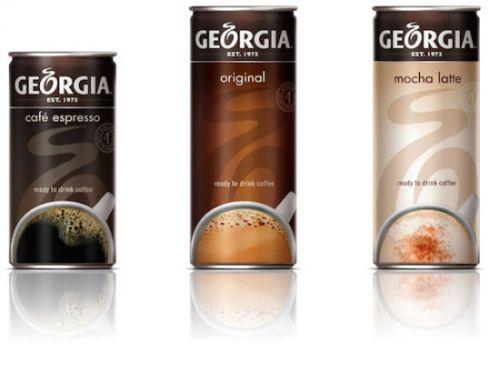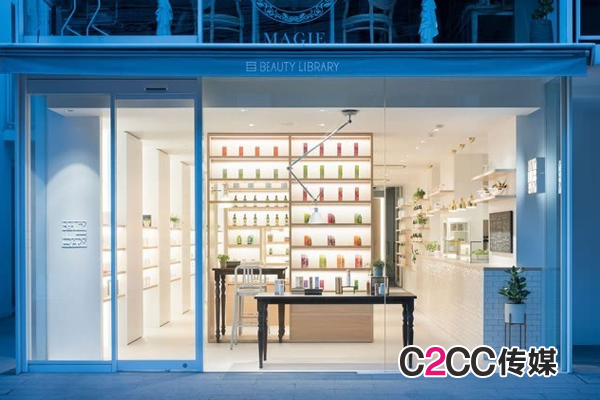Japanese coffee has a long history, but now Japanese prefer convenience store coffee.
As a daily drink, coffee has successfully penetrated into the people and integrated with the eating habits of the Japanese in the past 30 years. AGF is the leader of "bar coffee". Since the launch of the "BLENDY" brand in 2002, it is said that the market size has reached 33 billion.

As a daily drink, coffee has successfully penetrated into the people and integrated with the eating habits of the Japanese in the past 30 years.
Japan is indeed a big coffee country, with chain brands such as Starbucks and DOUTOR COFFEE doing well. But once you take a closer look, you will notice that the coffee market is in fact fraught with dangers.
In CAFE and the Japanese, Takai cited a survey conducted by the all Japan Coffee Association on the number of coffee cups per person per week in different drinking places, ranging from middle school students to adults aged 79. The results showed that the change in the figure was quite startling.
Years total family coffee shop, restaurant or fast food restaurant, workplace or school other
1983 8.6 5.1 1.1 0.1 1.7 0.5
2002 10.03 6.27 0.34 0.14 2.5 0.76
2012 10.73 6.85 0.21 0.11 2.56 0.93
I believe it is not difficult for everyone to find that coffee, as a daily drink, has successfully penetrated into the folk over the past 30 years and integrated with the eating habits of the Japanese, and the number of cups consumed per person per week has obviously increased. However, from another point of view, the statistics also clearly reflect that many people have gradually shifted the places where coffee is consumed from paid indoor restaurants to households, which coincides with the crisis in the coffee market.
Of course, this situation is directly related to the depression of Japanese society. Takai pointed out that according to the economic analysis of the Japanese media, the income of ordinary Japanese has not increased in the past 20 years. The general allowance has been reduced by an average of 13%, while the average income of each family has dropped by 7%, so there is a greater need to reduce daily expenses. As a matter of fact, a survey has long pointed out that the pocket money available to Japanese office workers has dropped by more than half compared with that in the bubble economy, so many of them have reduced their lunches and tried their best to bring their own lunches to work in order to reduce their expenses. the media even named them as "owners of a thousand-yuan pavilion" (the head of a family with only 1,000 yen), reflecting their strapped livelihood.
Since staple foods are economical, how can coffee be left alone as a "luxury"? It is said that even at the home of Yoshino, a large and inexpensive Japanese beef restaurant chain, the number of patrons for a cup of 200 yen coffee is much lower than before. As for the coffee shops that specialize in the lunch snack market, it is even more miserable. In the past, many male office workers ate lunch and then went to the coffee shop to enjoy a cup of delicious coffee before going back to work, which is now a thing of the past. In order to survive, many coffee shops are already offering sets of about 800 yen for lunch and coffee, but compared with fast food chain restaurants, the price still seems to be "superior"!
Convenience store coffee
Since the above dilemma, we can only in the limited market space, with either you die or I die mentality, to a dying bloody struggle. First of all, the coffee market of convenience stores should stand out. According to the market survey of Nikkei MJ in 2013, "SEVEN CAFE" has become the "Henggang of the East". In short, the coffee of 711 convenience stores has become the leading commodity in the Japanese market. In view of the fact that Japanese office workers are addicted to coffee on the one hand, but run out of money at the same time, 711 introduced hot coffee for only 150 yen per cup and frozen coffee for 180 yen, and guests can help themselves completely by simply paying the counter clerk, a consumption pattern that conforms to the urban rhythm.

Coffee in 711 convenience store is the leading commodity in the Japanese market.
In the first year of the launch of "SEVEN CAFE", the number of cups sold has exceeded 450 million cups. Based on a rough calculation of 100yen per cup, there is already a 45 billion market, which can be said to be a specific case of poverty. After the success of 711, other convenience stores are also catching up. For example, LAWSON, the second brother of the Japanese convenience store, launched "MACHI CAFE" nationwide in April 2014, hoping to get a piece of the pie. Family MART, the boss of the Japanese convenience store, had already set up counter coffee in September 2012, but it was far less powerful than its competitors, so it was repackaged on the road in November 2013 to compete with its competitors with the "FAMILY CAFE" brand. All these can be seen that when the market competition tends to be white-hot, each other has entered a life-and-death struggle stage.
The survival rules of other coffee
In addition to the newly expanded market, the original coffee not only has ways, but also constantly strives for profit in order to survive. Traditionally, canned coffee has always accounted for the largest proportion of turnover in the market, but revenue from canned coffee has been declining since the convenience store coffee bloomed. Even so, there was still a market of 739 billion yen in 2013, still accounting for 70% of the total.

The leader of canned coffee in Japan is GEOGIA.
For a long time, the leader of canned coffee in Japan is GEOGIA (Coca-Cola, Japan), the second is BOSS, and the customers are mainly male. Since the 1980s, a series of famous TV advertisements of "Healing system" featuring Naoko Iijima have been aimed at soothing white-collar and blue-collar men, and their sexual meaning has become more obvious in the later period, and has already established a fixed image. However, in the face of changes in the market, both advertisements began to infiltrate the consciousness of absorbing female consumers in an attempt to reverse the stereotype that canned coffee is only a boon to men. Even in the male market, in view of the working conditions of some manual workers, they have actively opened up the market for canned coffee without sugar and micro-sugar, hoping to respond to the pursuit of health in society, while at the same time using low fat as an attraction, so that they can have more than one can a day to increase consumption.
Finally, it can also be mentioned that even "stick coffee" has benefited from the economic downturn because it specializes in the cheap market.
AGF is the leader of "stick coffee". Since the launch of the "BLENDY" brand in 2002, it is said that the market size has reached 33 billion yen, which is also a good performance.
According to their spokesman, in the past, sales of "stick coffee" were basically concentrated in spring, autumn and winter, and were almost completely unsalable in summer. Now after adjusting the taste and groping for the delicious taste with ice, summer sales are beginning to pick up. At the same time, it also focuses on housewives, making them feel that "stick coffee" is a small gift to relax themselves after completing the housework! As a result, we have successfully entered the home market, in response to the above-mentioned statistics, the number of Japanese drinking coffee at home is increasing day by day, in which we can see the successful market strategy of "bar coffee".
Yes, in the face of a severe living environment, only continuous self-improvement is the way to survive.
Source: China Youth Network
Important Notice :
前街咖啡 FrontStreet Coffee has moved to new addredd:
FrontStreet Coffee Address: 315,Donghua East Road,GuangZhou
Tel:020 38364473
- Prev

Try on / read / eat dessert / drink coffee in the cosmetics shop. The beautiful cross-border makes you have to open your mind.
Content abstract: go to Yue Shi Fengyin to buy DIY trinkets, drink coffee in a beautiful beauty shop, go to O'Shudan for French desserts, ask friends to have dinner in Chanel's restaurant, and exchange the feelings and experiences of trying cosmetics. Although it may sound surprising at first, major brands and stores are trying this thing, they are no longer just selling cosmetics, they have gradually become mellow coffee.
- Next

COSTA coffee brand 2015 Christmas new product: English rye malt latte and eggnog hot chocolate
English rye malt latte and Christmas eggnog hot chocolate are officially on the COSTA Christmas menu, holding hands with our old friends caramel Bree latte and gingerbread cookie latte to bring you joy and warmth at Christmas. COSTA coffee brand 2015 Christmas new product: English rye malt latte and eggnog hot chocolate read it. British rye malt latte baked at high temperature is
Related
- A complete list of coffee bean names and their meanings! What is Yejia Shefi coffee? Where is Mantelin coffee?
- What grade does Arida Manor Kaduai coffee beans belong to? What treatment is Arida ASD slow anaerobic sun exposure?
- The milk tea cup becomes smaller?! Overlord Tea Girl launches a new "Return to Yunnan" series
- Accused of selling counterfeit and high-priced coffee beans! Well-known boutique coffee brand "Oukelao" bowed and apologized!
- How to make espresso dumplings? Can I eat coffee and glutinous rice balls together?
- Save the unformed and stagnant powder cakes in one second! What is the problem with stagnant water in the powder bowl of the espresso machine?
- What does hand-brewed coffee stop mean? Why is it not recommended to make coffee by hand?
- Is it normal to smell like coffee? Why does coffee smell like alcohol? What's wrong with the strong smell of cold extract ice dripping ice brewed coffee?
- How to solve the problem that hand-brewed coffee extraction takes too long? Why is the water flowing so slowly when making coffee?
- The main points of making Australian white coffee, the proportion details, how does Australian white properly foam and blend the flowers?

